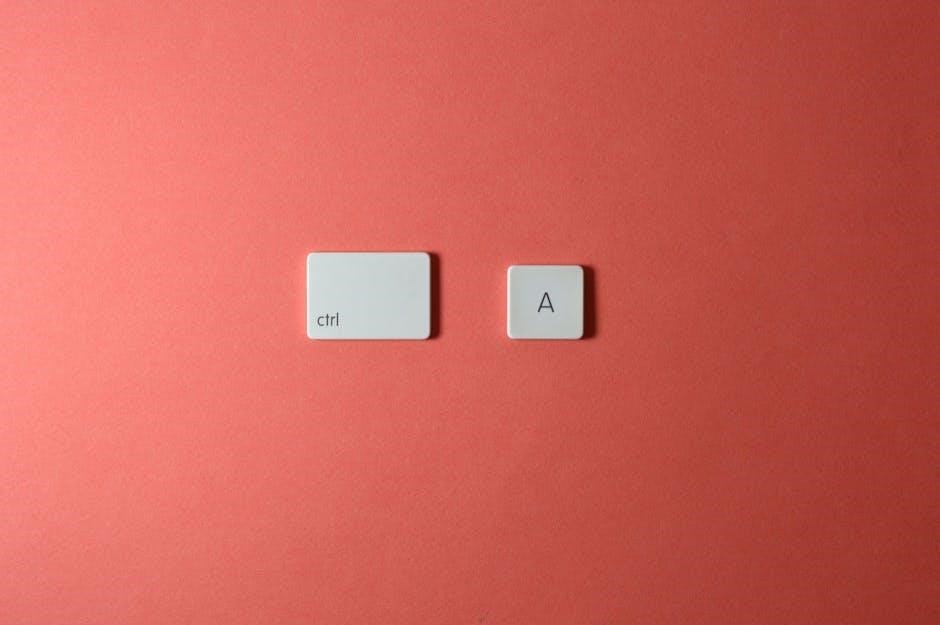AcuRite Weather Station Instruction Manual: A Comprehensive Guide
Welcome to your comprehensive guide to AcuRite weather station instruction manuals! This resource serves as your central hub for accessing manuals, understanding key features, and maximizing the performance of your AcuRite weather monitoring system.
Finding Your Specific AcuRite Manual
Locating the correct instruction manual for your AcuRite weather station is the first step towards optimal setup and usage. AcuRite offers a wide array of models, each with its own specific features and operational nuances. To ensure you have the precise guidance tailored to your device, follow these steps.
Start by identifying the model number of your weather station. This number is typically found on the device itself, often on the back or bottom, or it may be on the original packaging. Once you have the model number, visit the AcuRite website and utilize the search bar, entering the model number to locate the dedicated product page.
On the product page, you will find a section dedicated to manuals. Here, you can download a PDF version of your specific AcuRite weather station manual. Should your model be discontinued, explore the “Discontinued Products/Manuals” section within the AcuRite support website.
Websites such as Manuals.ca and Manua.ls also offer a repository of AcuRite manuals. Simply use their search function with “AcuRite” and your model number. Should you still face difficulties, contacting AcuRite support directly can provide personalized assistance in locating your manual.
Popular AcuRite Weather Station Models and Manuals
AcuRite has established itself as a leading brand in weather monitoring, offering a diverse range of weather stations catering to various needs. Several models have consistently gained popularity due to their reliability, accuracy, and user-friendly features. Understanding which models are widely used can help you gauge the community support and availability of resources.
Among the popular AcuRite weather stations are the AcuRite 02077, known for its comprehensive weather data display and ease of setup. Its manual is readily available online, offering clear instructions for installation and calibration. Another frequently sought-after model is the AcuRite 00829, praised for its accurate forecasting capabilities and intuitive interface. The AcuRite Weather Forecaster 75077 is also a popular choice, particularly appreciated for its reliable temperature and humidity readings.
These models, along with others like the AcuRite 00634A3 and AcuRite 00503, have a significant user base, making it easier to find troubleshooting tips, replacement parts, and alternative manuals if needed. When searching for manuals, prioritize the official AcuRite website for the most accurate and up-to-date information.
Understanding AcuRite’s Self-Calibrating Forecasting
AcuRite’s self-calibrating forecasting technology is a standout feature designed to provide users with a personalized and accurate weather prediction. Unlike traditional forecasting methods that rely on distant weather stations, AcuRite devices collect data directly from your backyard. This localized approach enhances the reliability of the forecast, making it more relevant to your specific microclimate.
The self-calibration process typically takes around 33 days. During this period, the weather station analyzes atmospheric pressure and temperature patterns to fine-tune its algorithms to your location. As it gathers more data, the accuracy of the forecast improves significantly.
This technology predicts weather conditions for the next 12 to 24 hours. The forecast is displayed using easy-to-understand icons, allowing you to quickly assess upcoming weather changes. The self-calibrating feature ensures that your weather station adapts to your unique environment, providing you with the most precise forecast possible. Understanding this feature is key to appreciating the long-term accuracy of your AcuRite weather station.
Setting Up Your AcuRite Weather Station: Initial Steps

Setting up your AcuRite weather station involves several initial steps to ensure accurate and reliable weather monitoring. First, carefully unpack all components, including the display console and the outdoor sensor. Remove any protective film from the LCD screen of the display unit. Next, install batteries into both the display console and the outdoor sensor, ensuring correct polarity;
Once the batteries are installed, the display console should power on. It will then begin searching for the outdoor sensor signal. This process may take a few minutes. Place the outdoor sensor in a temporary location, ideally within 5 feet of the display console, to ensure a strong initial connection. After the sensor is connected and transmitting data to the display, you can proceed with properly mounting the outdoor sensor in its permanent location.

These initial steps are crucial for establishing a solid foundation for your weather station’s functionality. Ensuring a proper connection and power supply will help you avoid common setup issues.
Navigating the User Interface and Display

Understanding the user interface and display of your AcuRite weather station is essential for effectively interpreting the data it provides. The display typically features several key sections, each conveying specific weather information. Look for the indoor temperature and humidity readings, which are usually prominently displayed. The outdoor temperature and humidity, received from the sensor, are also typically shown.
The display also provides weather forecasting based on AcuRite’s self-calibrating technology. This forecast is visually represented by icons, such as sunny, cloudy, or rainy symbols. The current date and time are also displayed, and may require initial setting. Many models include a section for displaying wind speed and direction, as well as rainfall data. Some advanced models offer additional features like UV index and lightning detection, displayed in their designated areas.
Familiarize yourself with the button functions on the display console. These buttons allow you to access settings, view historical data, set alerts, and calibrate sensors. By understanding the layout and functions, you can easily access the information you need and customize your weather station to meet your specific needs.
Troubleshooting Common Issues
Even with proper setup and maintenance, you might encounter some common issues with your AcuRite weather station. One frequent problem is inaccurate temperature readings, which can often be resolved by ensuring proper sensor placement, away from direct sunlight and heat sources. If the display console isn’t receiving data from the outdoor sensor, check the batteries in both units and ensure they are properly installed.
Wireless interference can also cause connectivity problems; try repositioning the console or sensor to minimize obstructions. If the rain gauge isn’t reporting accurately, inspect it for debris or obstructions that might be preventing proper measurement.
For inaccurate weather forecasts, remember that AcuRite’s self-calibrating technology requires time to learn your local conditions, so allow it to run for the recommended period. If issues persist, consult your user manual for specific troubleshooting steps or visit the AcuRite support website for additional assistance. There you can find FAQs, troubleshooting videos, and contact information for customer support.

Proper Placement and Maintenance for Accuracy
To ensure your AcuRite weather station provides the most accurate readings, proper placement and regular maintenance are crucial. Begin by selecting a location for the outdoor sensor that is free from obstructions and direct sunlight. Ideally, the sensor should be mounted in an open area, away from buildings, trees, and other structures that could interfere with wind and temperature measurements.
The rain gauge should be positioned where it can collect rainfall without being blocked by overhanging objects. Regular cleaning of the rain gauge is essential to prevent debris buildup, which can lead to inaccurate readings. Periodically check the temperature and humidity sensors for any signs of damage or wear. Replace batteries as needed to maintain consistent performance.
For the display console, keep it away from direct sunlight and extreme temperatures. Clean the screen with a soft, dry cloth to avoid scratches. By following these simple guidelines, you can maximize the accuracy and longevity of your AcuRite weather station.
Exploring Advanced Features: Wi-Fi Connectivity and Alerts
Many AcuRite weather stations offer advanced features such as Wi-Fi connectivity and customizable alerts, enhancing their functionality and providing a more comprehensive weather monitoring experience. With Wi-Fi connectivity, you can connect your weather station to online platforms like Weather Underground, allowing you to remotely access your weather data from anywhere with an internet connection.
This feature also enables you to share your weather information with a broader community, contributing to a more accurate and detailed weather map. Furthermore, you can set up custom alerts for various weather conditions, such as high winds, heavy rainfall, or extreme temperatures. These alerts can be sent to your smartphone or email, providing timely notifications to help you prepare for changing weather conditions.
To take full advantage of these advanced features, consult your AcuRite weather station’s instruction manual for detailed setup and configuration instructions. By leveraging Wi-Fi connectivity and alerts, you can stay informed and proactive in managing your home and outdoor activities.
Calibrating the Rain Gauge (If Applicable)
For AcuRite weather stations equipped with a rain gauge, calibration is crucial for ensuring accurate rainfall measurements. Over time, the rain gauge may become slightly misaligned or require adjustment due to environmental factors. The instruction manual for your specific model will provide detailed steps on how to calibrate the rain gauge properly.
Typically, the calibration process involves comparing the rain gauge’s readings to a known volume of water and making adjustments to the tipping mechanism or sensor sensitivity. By carefully following the instructions in your manual, you can fine-tune the rain gauge to provide precise rainfall data.
Regular calibration, especially after periods of heavy rain or extreme weather, is recommended to maintain the accuracy of your AcuRite weather station’s rainfall measurements. This ensures that you have reliable information for gardening, irrigation, and other weather-sensitive activities; Refer to your instruction manual for model-specific calibration procedures.
Discontinued Models and Manual Availability
Even if your AcuRite weather station is a discontinued model, access to its instruction manual remains valuable for troubleshooting, maintenance, and understanding its features. AcuRite typically maintains an archive of manuals for many of its discontinued products on their support website.
To find the manual for your discontinued model, visit the AcuRite website and navigate to the “Support” or “Discontinued Products” section. You can then search by model number to locate the corresponding manual in PDF format.
In cases where the official AcuRite website doesn’t have the manual available, online resources like Manuals.ca or Manualzz may host copies uploaded by other users. When downloading from third-party sites, exercise caution and ensure the file is from a reputable source to avoid potential security risks.
Having the manual for your discontinued AcuRite weather station can extend its lifespan and help you continue to benefit from its weather monitoring capabilities.
